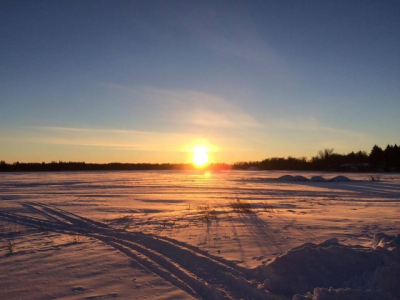This week's Manitoba Crop Report saw a great deal of precipitation in the Northwest region.
Isolated heavy rains hit most of the province, but the Fork River logged the most, with 82.1mm of rain. This was the most seen in the province, with the least falling on St.Lazare (1.1mm)
Not all this rain came in liquid forms, as hail was observed in the Northwest. Damage is still yet to be assessed in the crops affected.
Growing degree days are also still a bit behind the average, as the province has seen near or below 90% of the normal average. the cooler weather has left things still quite saturated.
An overview of the various crops has some mixed results.
In cereals, Fall rye, and winter wheat are at the soft dough stage with the most advanced fields ripening. Spring wheat ranges from flag to heading, and fungicide applications are being applied where conditions allow for it.
Spring wheat is rated fair to mostly good, but roughly 10% of the crops are reported as poor in the Central, Interlake, and Northwest regions. As well, corn ranges from V6 to V8.
Oilseeds are moving along, with canola ranging from rosette to flowering, and fungicide applications taking place where possible. Sunflowers are between V8 and V12, and flax is between growth stages 5 and 7.
In Pulses and Soybeans, field peas reached the R1-R2 stage, with fungicides applied for blight. Soybeans range from the second to fourth trifoliate stages with some flowering reported in the earliest planted crops. Dry beans are in the third and fourth trifoliate stages as well.
The excess rain is starting to weigh on forages and livestock. Hay cuts have been tricky in many areas as drying times are insufficient. Some producers are concerned about the quantity and quality of harvested feed that will be carried into the winter seasons.
Grasses and alfalfa are both bountiful, but there's a lot of difficulty in getting to processing it. There is worry that forage quality will drop as the plants mature,
No issues with keeping dugouts full, and the cattle in the pasture are doing well overall. Low-lying areas are potentially seeing issues with foot rot, pink eye, and excess flies.
Taking a closer look at the Northwest region, summer thunderstorms brought yet more rain and some hail. As mentioned earlier, the damage assessment is still ongoing.
The earliest field peas are now in R1 stage, and for the most part, fields are looking good. However, there are fields affected by the excess moisture and doing poorly.
Spring wheat has sprung up a bit faster with some more consistent heat with most of the fields progressing to the flowering stage. There are some compounding issues arising from the moisture.
Fields affected by excess moisture are yellowed and stunted, and the excess humidity increases the risk of fusarium head blight. on top of that, fungicide application is a challenge with the soft, soaked soil.
Canola crops are varied, with the earliest crops flowering and the remainder in the bolting and rosette stages. Flea beetles are subsiding as plants mature and the season shifts.
The warmer weather has been helpful for soybean crops as they are now in the second to fourth trifoliate stages and generally looking good.
Winter wheat and fall rye crops in our area are not running into too many excess moisture problems. It looks good and is in the grain development stage.
With the hot week this week, Agro-Manitoba might finally be getting the summer it needs. Warm, sunny weather is sure to bolster growth and dry up the fields, allowing more maintenance to be done.
Until next week, here's wishing for a productive, and hopefully drier, season for producers.







